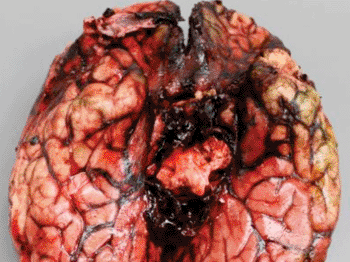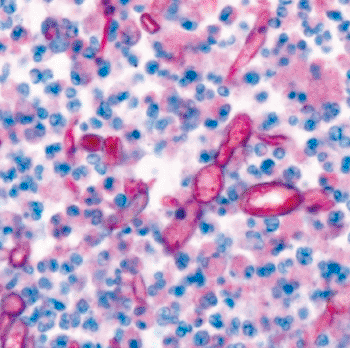Pathological Findings Reveal Details of the Fungal Outbreak from Contaminated Steroid Injections
By LabMedica International staff writers
Posted on 09 Jul 2013
A team of American investigators have described the pathological findings they compiled during the extensive examination of tissue samples obtained from 40 patients infected with the fungus Exserohilum rostratum after having been injected with a contaminated steroid.Posted on 09 Jul 2013
Contamination of methylprednisolone acetate with the black mold, Exserohilum rostratum, was the primary cause of the largest reported outbreak in the US of infections associated with epidural and intra-articular injections. The outbreak, which was originally reported in September 2012, eventually included more than 13,000 persons who were exposed to the potentially contaminated drug, 741 confirmed drug-related infections, and 55 deaths. Fatal meningitis and localized epidural, paraspinal, and peripheral joint infections occurred.
A team from the [US] Centers for Disease Control (Atlanta, GA, USA) examined tissues from 40 laboratory-confirmed cases representing these various clinical entities. The samples were evaluated by histopathological analysis, special stains, and IHC (immunohistochemistry) to characterize the pathological features, investigate the pathogenesis of infection, and to evaluate methods for detection of Exserohilum in formalin-fixed, paraffin-embedded (FFPE) tissues.
Of the 40 cases reviewed, 16 were fatal, and all except two fatal cases had a clinical diagnosis of meningitis. Autopsy examination showed extensive hemorrhage and necrosis around the base of the brain and thrombi involving the basilar arterial circulation. Similar pathologic findings were seen at the epidural injection site. Fungus was not found in tissue samples taken from the heart, lung, liver, or kidney.
IHC was found to be a highly sensitive method for detection of fungus in FFPE tissues, demonstrating both hyphal forms and granular fungal antigens, and PCR identified Exserohilum in FFPE and fresh tissues.
"The observation of abundant fungi in the perivascular tissues, but relatively low numbers of fungi inside blood vessels, suggests migration of fungus into, rather than out of, vessels at this location. This supports the hypothesis that Exserohilum migrates from the lumbar spine to the brain through the cerebrospinal fluid with subsequent vascular invasion, rather than migration through the vasculature," said first author Dr. Jana M. Ritter, a veterinary pathologist at the Centers for Disease Control.
The findings were published in the June 28, 2013, online edition of the American Journal of Pathology.
Related Links:
Centers for Disease Control















